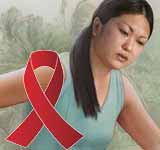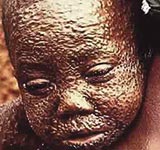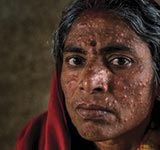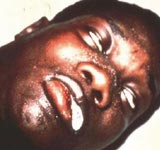1. Dupuytren's Disease

Transmissible spongiform encephalopathy (TSE) also known as prion diseases - a group of neurodegenerative diseases of humans and animals with the formation of spongiform encephalopathy, which belongs to slow infections and is characterized by central nervous system, muscle, lymphatic and other systems. The causative agent of this group of diseases are prions - a special class of infectious agents represented by proteins with an abnormal tertiary structure and not containing nucleic acids. The disease leads to degradation of mental and physical abilities with the formation of a huge number of holes in the cerebral cortex, in connection with which the brain under a microscope at autopsy resembles a sponge (hence the name spongy). The disease disrupts the functioning of the brain, deterioration of memory and coordination is progressing, personality disorders occur in humans. In humans, prion diseases include the classic version.
3. Adrenocortical Carcinoma (A form of cancer)
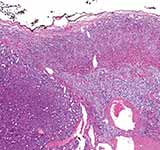
4. Creutzfeldt–Jakob Disease
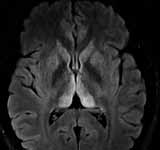
5. Alzheimer's Disease
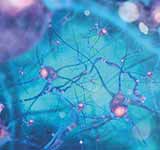
6. Fatal Familial Insomnia

7. Plague
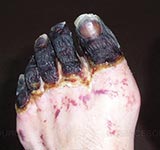
Plague or pestilence is a human infectious disease caused by enterobakteria Yersinia pestis. Plague is spread by rodents (especially mice ). This epidemic has happened in history, and has caused a large loss of life.
AIDS is a set of symptoms and infections or syndromes that arise due to damage to the human immune system due to infection with the HIV virus or infection with other similar viruses that attack other species.
9. Fibrodysplasia Ossificans Progressiva

10. Allergic Diseases

11. Amyotrophic Lateral Sclerosis

12. Arthritis

13. Asthma

14. Ataxia

15. Cerebral Amyloid Angiopathy

16. Coeliac Disease

17. Common Cold

18. Desmoplastic Small-Round-Cell Tumor

19. Diabetes

20. Epilepsy

21. Fibromyalgia

22. Genetic Disease

The glioblastoma multiforme is the most common and aggressive type of malignant brain affecting cancer. Initial signs and symptoms are nonspecific and may include headache, personality changes, nausea, and stroke. Worsening of symptoms is usually rapid and may progress to unconsciousness.
24. Hereditary Multiple Exostoses

25. Herpes

Huntington's disease, chorea Hunting or Cairo chore is a disease that attacks the nerves. this disease is caused by genetic factors, so it can be inherited from parents to their children. this disease affects about 1 in 20,000 people in Western Europe and 1 in 30,000 in the United States.
27. Inflammatory Bowel Disease

28. Irritable Bowel Syndrome

29. Multiple Sclerosis

30. Naegleria Fowleri

Naegleria fowleri is apathogenic free-living aerobic ameboflagellate typical of temperate and stagnant freshwater such as lakes, lagoons, ponds, swimming pools, thermal springs and irrigation channels.
31. Norovirus

32. Polio

33. Pre-Eclampsia

34. Progeria

35. Pulmonary Hypertension

36. Rabies

37. Sickle Cell Disease

Variola or smallpox was a human infectious disease caused by the Variola major or Variola minor virus. This disease is known as its Latin name Variola or Variola vera, which comes from the Latin word varius, which means "speckled", or varus which means "zit". Smallpox appears in small blood vessels in the skin and in the mouth and esophagus. On the skin, this disease causes a rash, and then a fluid filled wound. Variola major causes a more serious disease with a mortality rate of 30-35%. Minor Variola causes a milder disease also known as alastrim, cottonpox, milkpox, whitepox, and Cuban itch which causes death in 1% of sufferers. The long-term consequences of major Variola infection are scars, generally on the face, which occur in 65–85% of patients.
39. Tetanus

The visceral leishmaniasis, also known as kala-azar, is an infectious disease caused by a protozoan parasite of the genus Leishmania, affects man and different animal species, primarily the dog. It is the most serious form of leishmaniasis and a major cause of mortality worldwide, occurring between 200000 to 400000 cases in humans per year. There are two species of Leishmania that can cause visceral leishmaniasis. In East Africa and India cases are caused by Leishmania donovani, while in Europe, North Africa and Latin America the agent is Leishmania infantum, also known as Leishmania chagasi. It is endemic in East Africa and India. 90% of cases worldwide occur in only 6 countries: Brazil, Ethiopia, Sudan, South Sudan, India and Bangladesh. The transmission is produced by the bite of mosquitoes of the previously infected genus Phlebotomus or Lutzomyia.
Ebola virus disease (EVD) or Ebola hemorrhagic fever (EHF) is a disease in humans caused by the Ebola virus. The incubation period usually starts two days to three weeks after contracting the virus, with fever, sore throat, muscle aches, and headaches. This symptom is usually followed by nausea, vomiting, and diarrhea, and decreased liver and kidney function. In these conditions, people exposed to the Ebola virus begin to experience bleeding problems. The incubation period is between 2 and 21 days. Most often between 4 and 10 days. However, there is a 5 percent incubation period that reaches more than 21 days. Symptoms usually begin with sudden influenza where sufferers feel weak, fever, weakness, anorexia, muscle pain (myalgia), joint pain (arthralgia), headache, and sore throat. Fever is usually higher than 38.3°C (100.9°F). Frequent vomiting, diarrhea (diarrhea) and upper and lower abdominal pain are often followed. Then, shortness of breath, chest pain, also freezing (edema), and reduced awareness (confusion). About half of the cases, patients experience maculopapular rash on the skin which occurs 5 to 7 days after the first symptoms occur. In some cases, internal and external bleeding may occur, 5 to 7 days, after the first symptoms occur. All infected patients suffer from blood clotting difficulties. Bleeding from the lining of the mouth, nose and throat and from former injection holes occurs in 40-50 percent of cases. This causes vomiting of blood, coughing up blood and defecating blood. Bleeding to the skin causes petechiae, purpura, ecchymoses or hematomas (especially around the injection site). Eyes become red because bleeding can also occur. Severe bleeding is rare, and if it occurs it is usually localized in the digestive tract.
42. Marburg Virus

African trypanosomiasis or sleep disease is a parasitic disease of humans and other animals. This is caused by the parasite of the Trypanosoma brucei species. There are two types of parasites that infect humans, Trypanosoma brucei gambiense (TBG) and Trypanosoma brucei rhodesiense (TBR). Tuberculosis causes more than 98% of reported cases. Both are usually transmitted through the bite of infected tsetse flies and are most common in rural areas.
44. Fluoroquinolone Toxicity Syndrome



